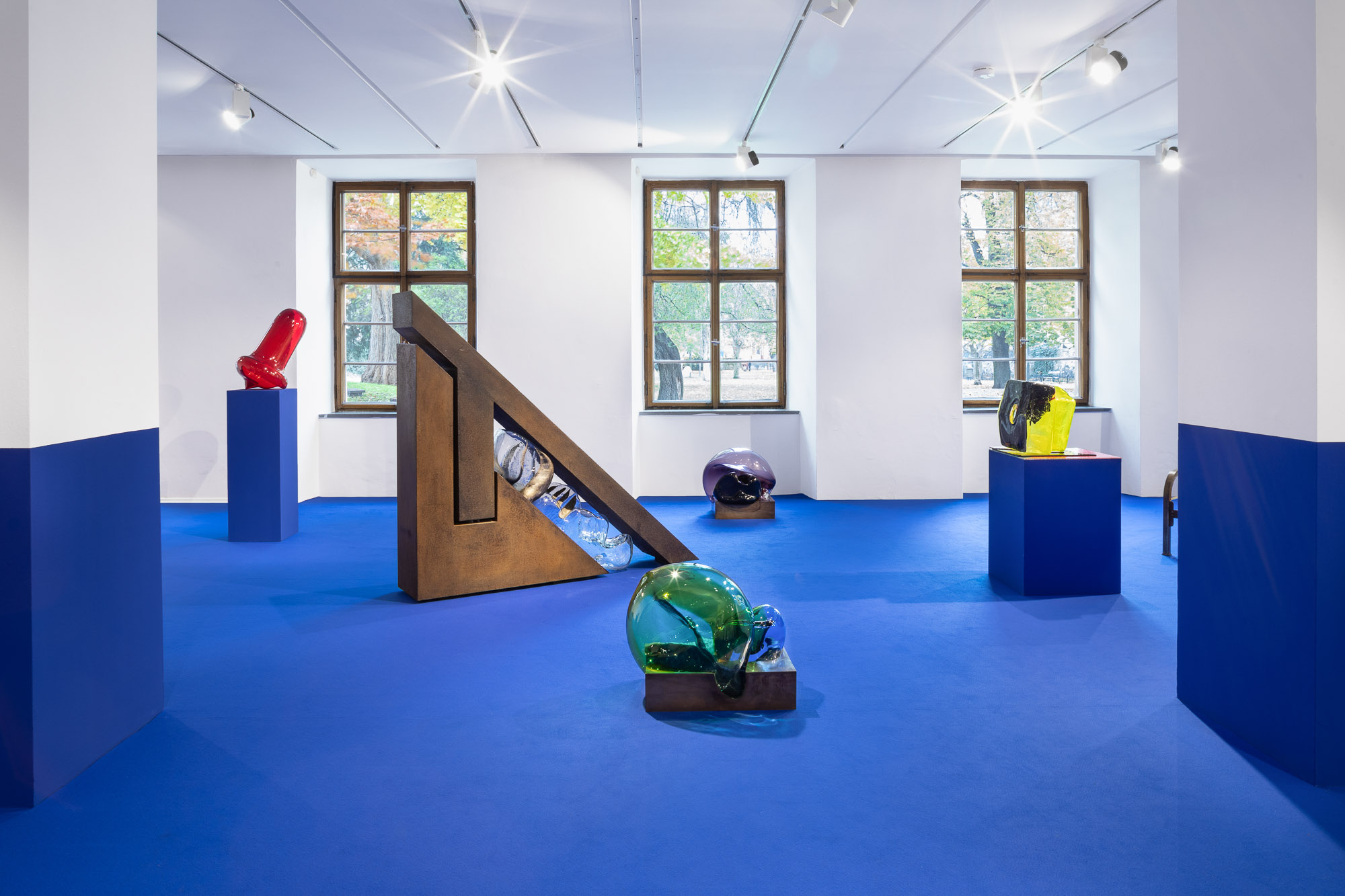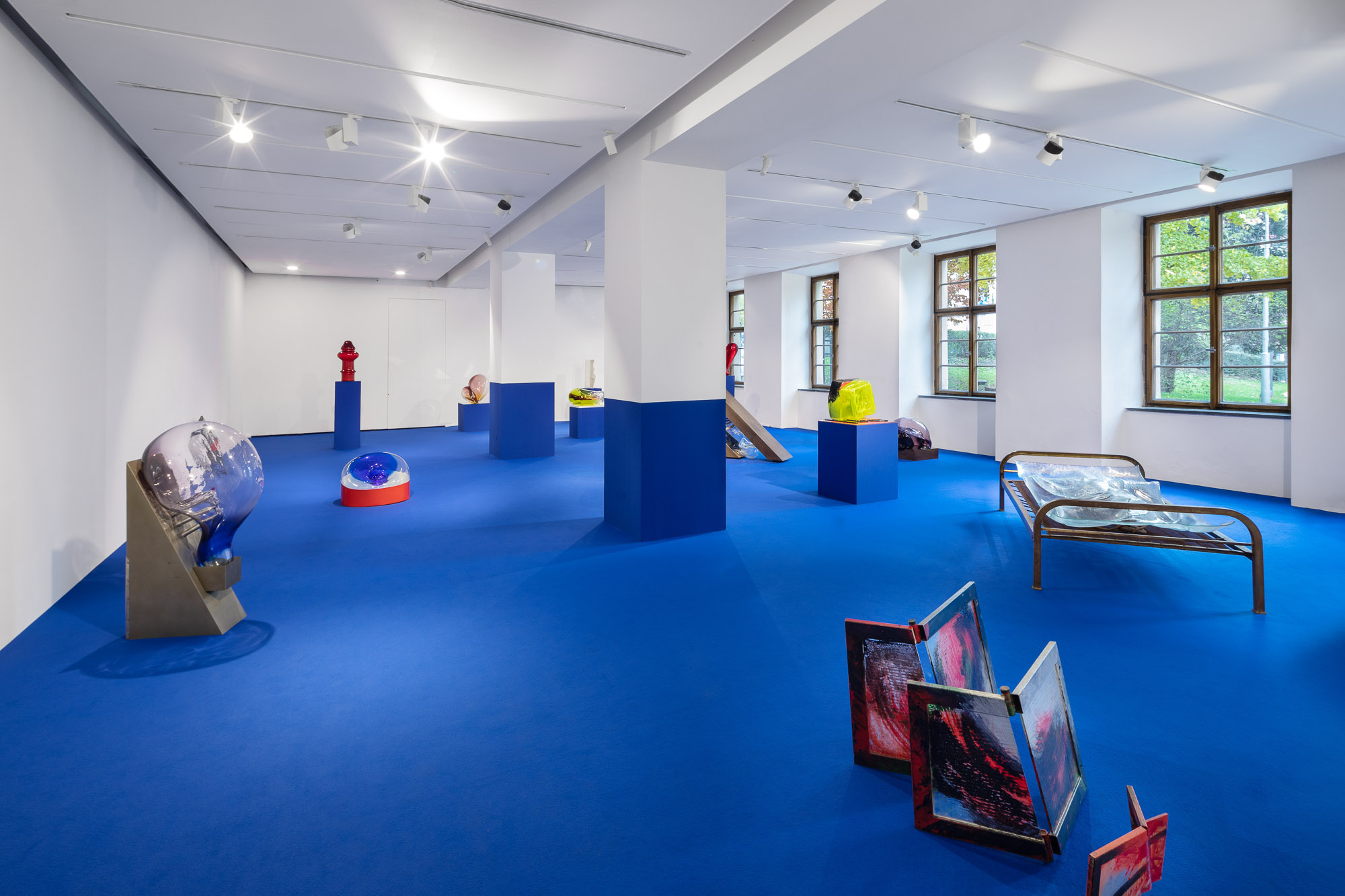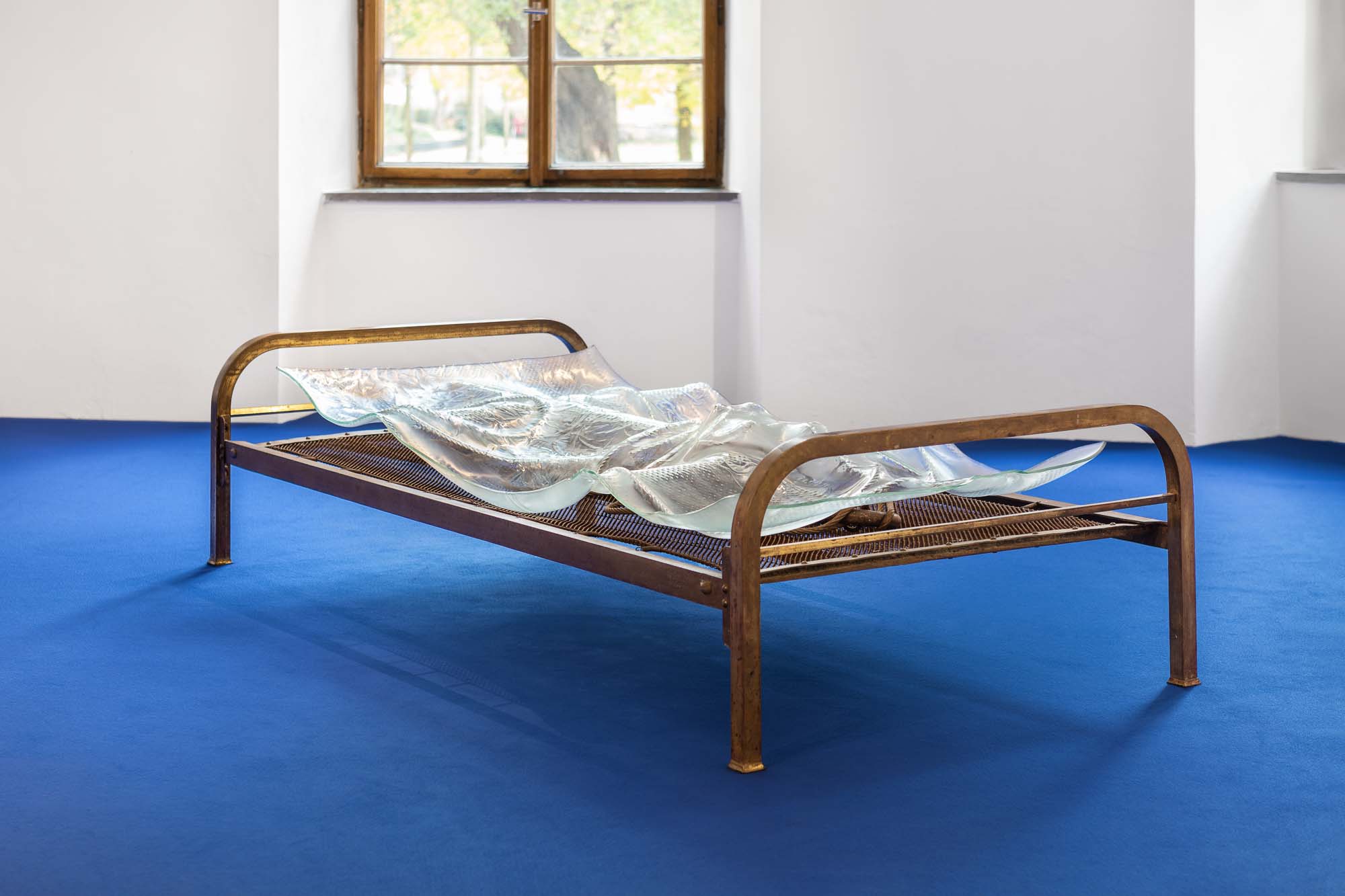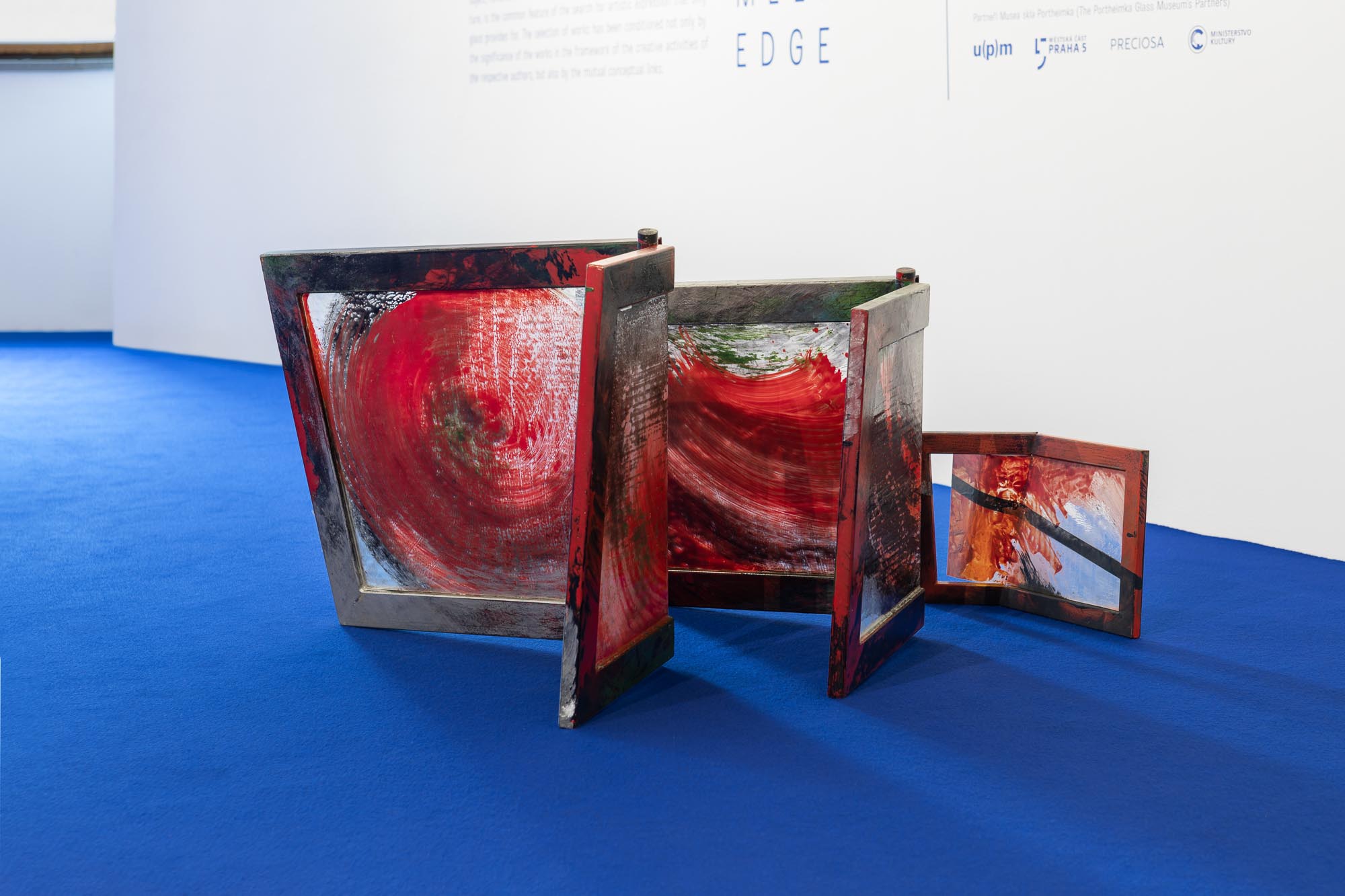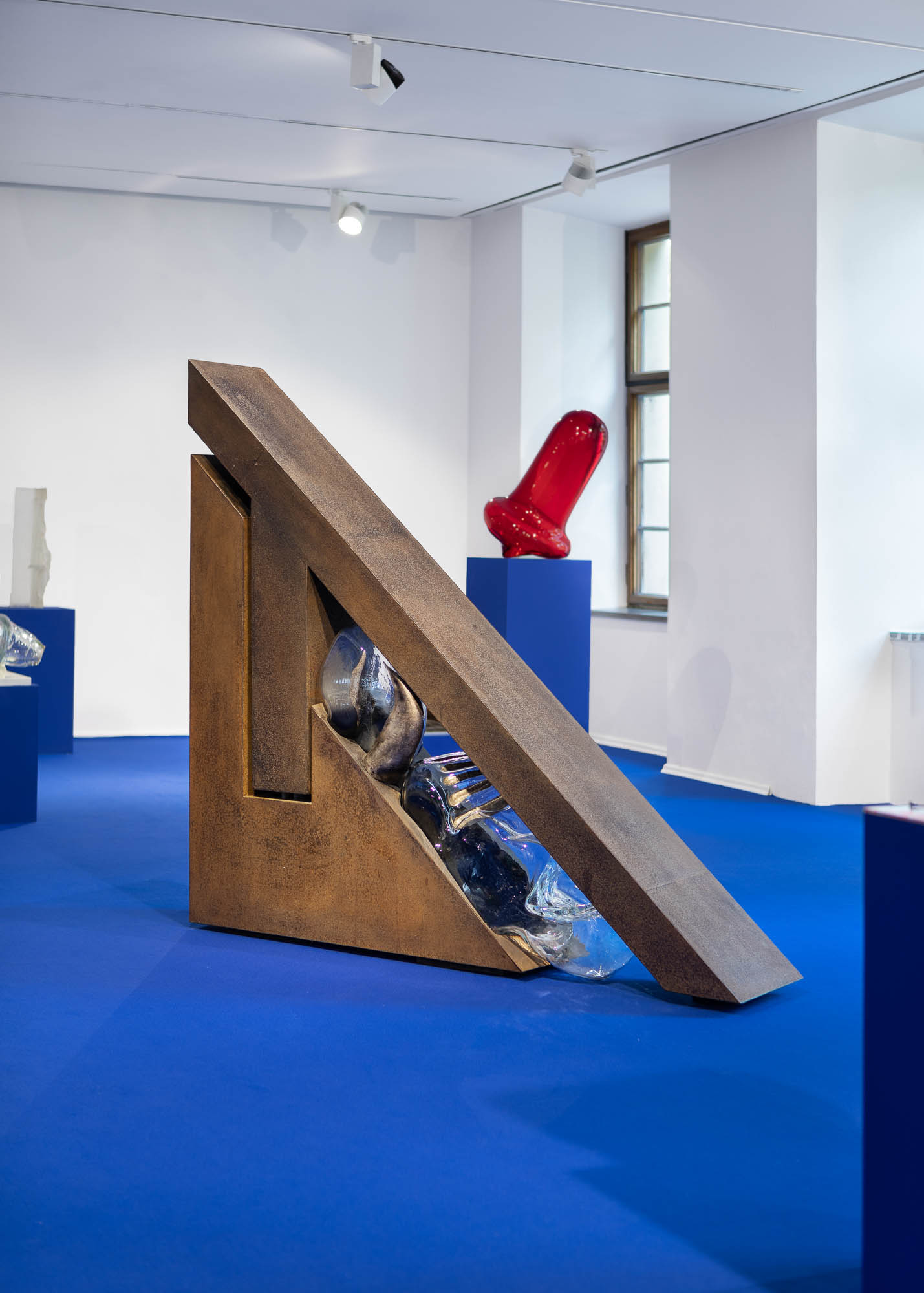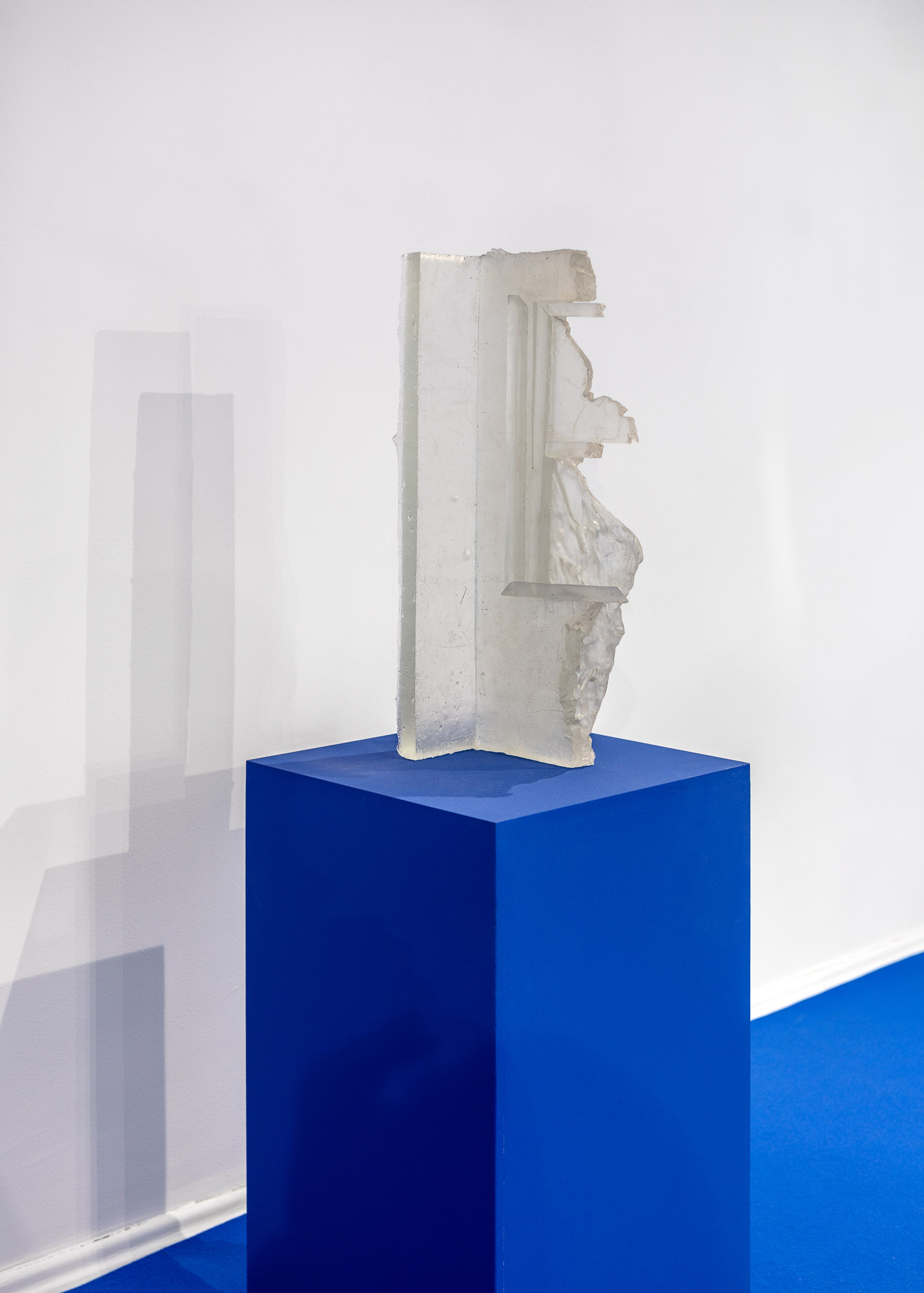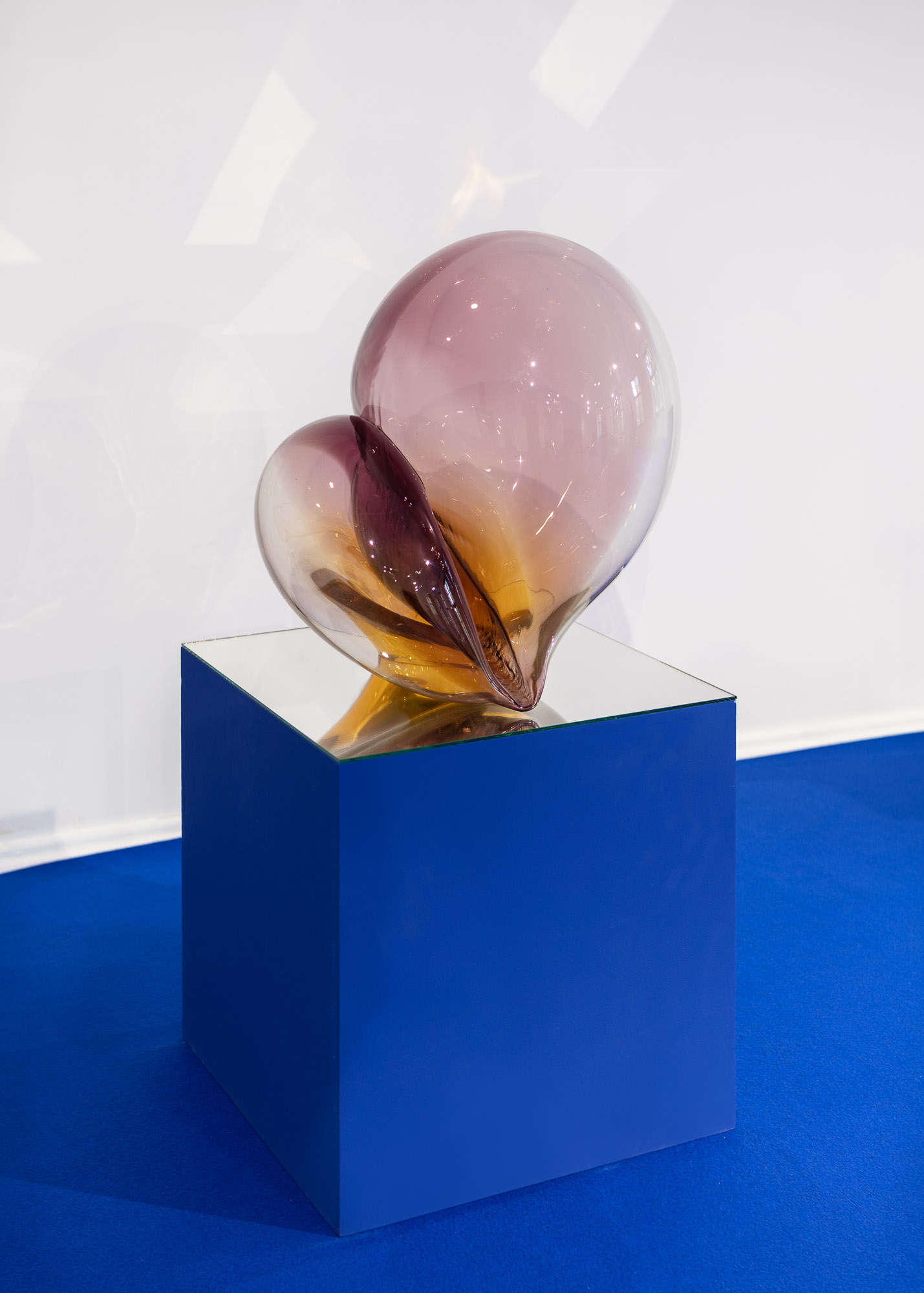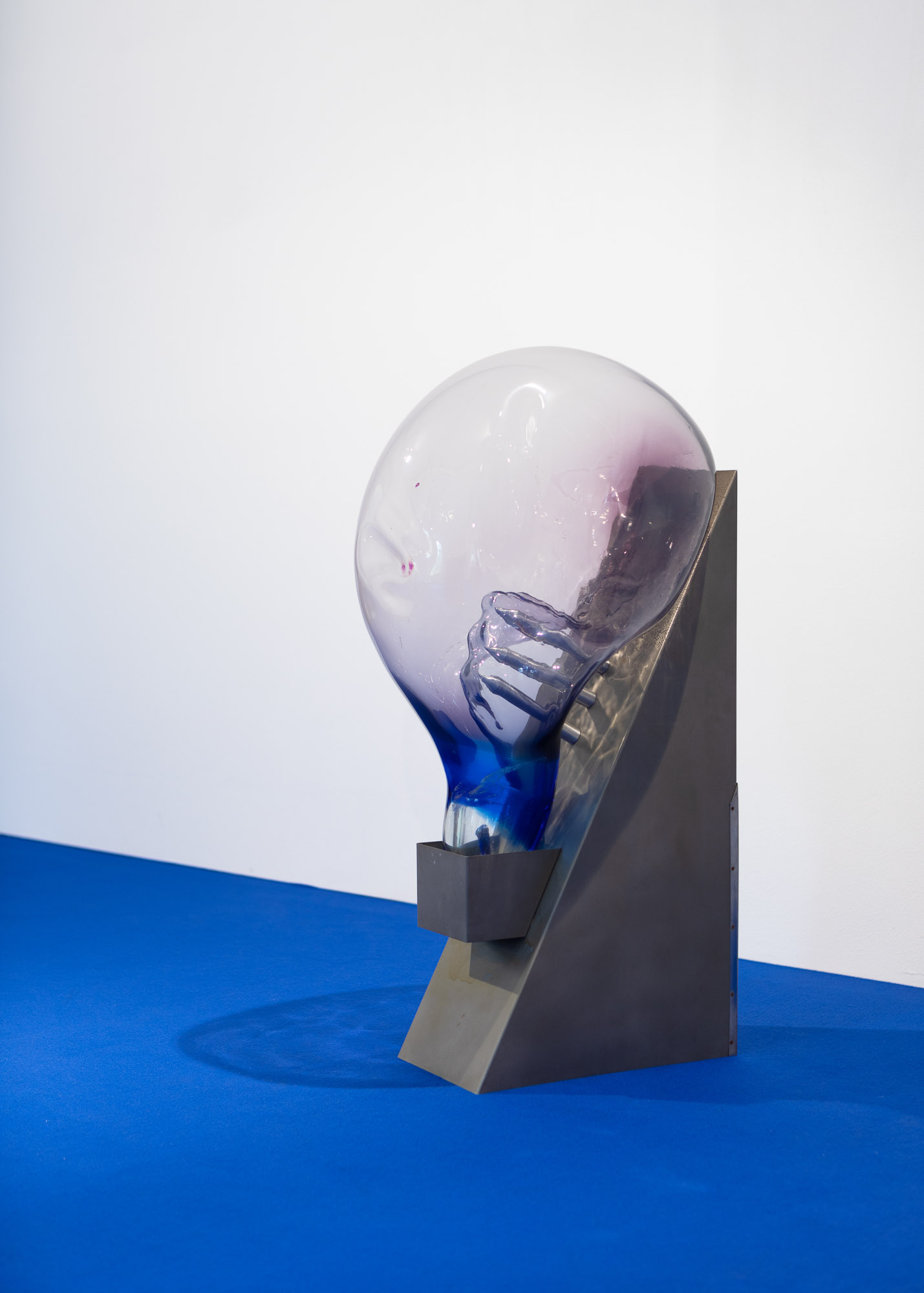The exhibition Melting Edge is a tribute to three outstanding artists – Eliška Rožátová (*1940), Dana Vachtová (*1937), and Jiřina Žertová (*1932), who contributed significantly to the development of Czech studio glassmaking in the second half of the 20th century. They are interlinked by not only a lifelong friendship and participation in many important exhibitions and symposia in the Czech Republic and abroad, but also their studies at the Academy of Arts, Architecture and Design in Prague in the renowned studio of Professor Josef Kaplický. The scope of their work encompasses not only sculpture, but also product design and numerous applications in architecture. The exhibition presents the artists in several creative periods starting from the 1970s up to the 1990s, when they alternately exploited the possibilities of molten glass sculpture, glass objects blown into a mould, or a combination of glass with other techniques and materials, especially painting and metal. Although they represent three utterly different creative approaches to working with glass as a sculptural material, one can see the approaches of the respective artists getting closer to one another in terms of ideas and material, especially during the 1980s. Their fascination with the inner space and the dematerialization of a three-dimensional object, removed as much as possible from the traditional concept of sculpture, is the common feature of the search for artistic expression that only glass provides for. Therefore, the selection of works displayed has been conditioned by the importance of the respective works in the framework of each artist’s individual work as well as by mutual conceptual links.
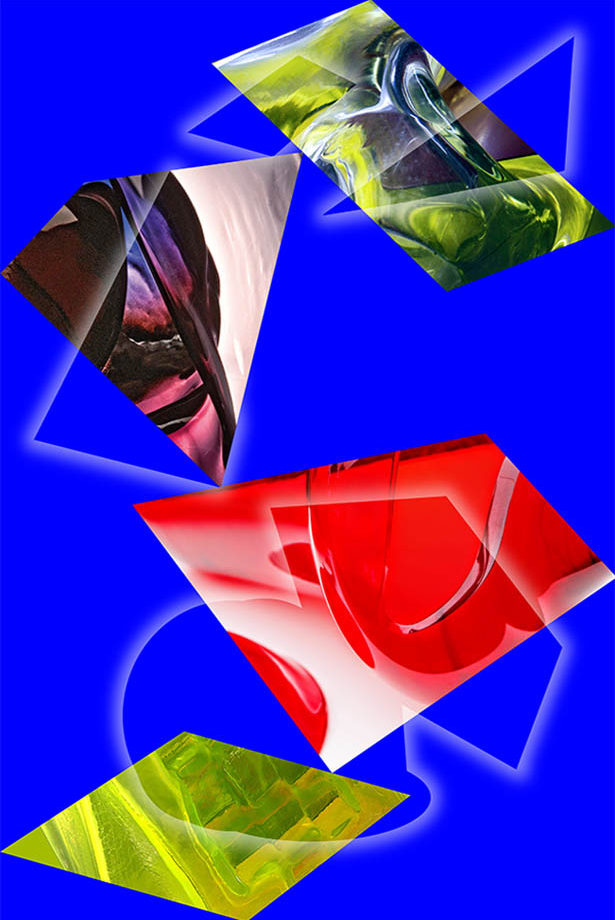
19/11/2019 – 23/2/2020
Melting Edge
Rožátová – Vachtová – Žertová
Exhibition Curators: Ján Gajdušek, Tereza Havlovicová
Project Manager: Alena Holubová
Czech Copy Editing: Jana Křížová
English Translation: EUFRAT Group, s. r. o., Plzeň (Tomáš Hausner)
Architectural Design: Lukáš Machalický
Graphic Design: Milan Nedvěd
Accompanying Programme: Mariana Dočekalová
Publicity: Jana Pelouchová
Installation: Arte Partner Prague, s. r. o.
Cooperation: Helena Musilová
Acknowledgements: The exhibition’s authors wish to express their gratitude to the artists for loaning the exhibits and for their kind help during the preparation of the exhibition, as well as to other people, institutions and companies, namely the Cesty skla, o. p. s., Moravian Gallery in Brno, Museum Kampa – The jan and Meda Mládek Foundation, Museum of Decorative Arts in Prague, Petr Medek, Miloš Věrný and Lenka Viková, for their technical support and help during the preparation of the exhibition.
Eliška Rožátová
Eliška Rožátová studied at the Academy of Arts, Architecture and Design in Prague at the studios of Josef Kaplický and Stanislav Libenský in 1960–1966. From the very beginning, her work has been strongly linked to numerous applications in architecture in the form of stained glass and monumental glass mosaic compositions. Since the end of the 1960s, she has been transforming her free work from mould-blown objects through molten sculpture and slumped glass to conceptual site-specific open-air installations. There is abundancy of references in her objects to architecture and the dynamics of Constructivism. Her works are easily recognizable by a distinctive colour scheme with an emphasis on red shades, evident in both glass and painting. The exhibited works by Eliška Rožátová from the 1970s century include original rotary blown objects that linger on the edge of stability. In the 1980s and 1990s, her work gained considerable variability in shape and material. The glass is entangled by a wire or enclosed in geometric grids and frames, often using a stained glass technique.
- The Bed (1993) is the most prominent work by Eliška Rožátová exhibited at the present exhibition. The large sculpture created by the technique of slumped glass resembles a wrinkled wool with visible imprints of old ropes and fabrics. However, it also resembles the crumbling torso of a human body tied with ropes. The glass lies uncompromisingly on the old metal bed structure and the object opens the door to worrying thoughts about our existence.
- At the end of the 1980s, Eliška Rožátová began to work on the Broken series, applying energetic gestural painting on its respective objects. Shades of red, green and black cover variously structured or wired glass panes that are set in a metal frame. These frames are hinged to allow the object to be displayed in different positions. The artist thus inserts energetically conceived glass into a strict geometric frame, which, however, can be imagined to break.
Dana Vachtová
Dana Vachtová studied in the studio of Josef Kaplický at the Academy of Arts, Architecture and Design in Prague from 1956 to 1963. From the beginning, a strong sculptural expression prevailed not only in glass, but also in metal and wood objects. She often exploited the topics of chaos and order, the transience of human existence, spiritual and mythological motifs and references. During the 1960s and 1970s, she also focused on figural sculpture (mainly made of polished aluminium and bronze). The dynamically abstracted form and organic fluidity were then transferred to the extensive cycle Živly (Elements), which originated during the 1970s and 1980s, when Vachtová created large blown-glass sculptures combined with rigid metal frames or pedestals. In the 1990s, she abandoned blown-glass objects and focused her attention on molten sculpture instead. There are remarkable variations on ruins of dilapidated human dwellings originated in that period. The intense experience of these reflections moves the artist to her latest cycle Zrození (Birth), in which she works with mythical landscapes and cosmological motif of an egg as a symbol of the beginning and coming birth.
- The Constricted Element (1981) impressively depicts the contrast between two opposing forces. A cluster of fragile glass bubbles is in grips of a heavy iron prism. However, despite their fragility, they represent unrestricted natural power. Thus the strictness of the order and the natural energy are ideally balanced here.
- Another of the exhibited objects belongs to the Lost Homes series from the turn of the 1990s. The flat molten sculpture of earthy shades refers to the crumbling ruins of houses abandoned by their inhabitants in the Czech Sudetenland, whose remains are slowly dilapidating by forces of nature. Together with the Window, it is a memento of the transience and frailty of human life.
Jiřina Žertová
Jiřina Žertová studied in the studio of Josef Kaplický at the Academy of Arts, Architecture and Design in Prague in 1950–1955. During the 1960s, she focused primarily on product glass design in cooperation with the glassworks in Nový Bor and Škrdlovice in North Bohemia. During the 1970s, she decided to devote herself to free arts and to explore the shape limits and possibilities of glass. The fascination with the use of the interior space of a transparent glass cavity as a sculptural object has long been the main theme of her work. It is precisely the transparency and plasticity of glass that allows it to display the interior space of the work with the same prominence as its surface. During the 1980s and 1990s, Jiřina Žertová began to treat her objects with gesture painting of prominent colours. This painting concept of the surface, together with the admitted imprints of glassmaking tools, deliberately disrupt the original smoothness and certain decorative character of glass – the so-called ‘ugly glass’ with various textures on the surface reaching into the interior space of the work. Since the mid-1990, Jiřina Žertová has abandoned blown glass and began to create folded objects made of sheet glass treated with gesture painting, creating illusory geometric objects or abstract shapes set inside the glass panes.
- A large blown object in the shape of a divided bubble with different intensity of ruby shades was created in 1973 in the Chřibská glassworks in Nový Bor in cooperation with the blower František Danielka, with whom Dana Vachtová also cooperated in the same period. Jiřina Žertová managed to divide the internal space of the cavity into two parts. In order to create this complex shape, the molten glass in the glassworks was folded over an old wooden headboard.
- Jiřina Žertová has often used various glassmaking tools, such as metal grids or blow pipes, for structured imprints on the enamel surface. This creates a negative of an external image. This can also be seen in the work Too Distant, whose interior space is penetrated by three metal spikes from the outside. The artist thus achieved tension between the inner and outer parts of the work, given the expectation of the moment when the metal spikes irreparably break through the glass wall.


